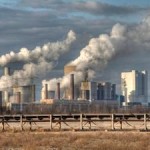
New York – DARA and Climate Vulnerable Forum report – the most comprehensive ever assessment of the current global impact of climate change – was released on September 26.
20 governments commissioned the independent report, the first of its kind to show that tackling the global climate crisis would already reap significant economic benefits for the world, major economies and poor nations alike.
“Climate Vulnerability Monitor” study’s findings point to unprecedented harm to human society and current economic development that will increasingly hold back growth, on the basis of an important updating and revision of previous estimates of losses linked to climate change.
Key findings include the following estimates:
- Climate change and a carbon-intensive economy considered a leading global cause of death today, responsible for 5 million deaths each year – 400,000 due to hunger and communicable diseases aggravated by climate change and 4.5 million carbon economy deaths due mainly to air pollution.
- Failure to act on climate change already costs the world economy 1.6% of global GDP amounting to 1.2 trillion dollars in forgone prosperity a year.
- Rapidly escalating temperatures and carbon-related pollution will double costs to 3.2% of world GDP by 2030.
- Losses for lower-income countries are already extreme: 11% of GDP on average for Least Developed Countries already by 2030.
- Major economies are heavily hit: in less than 20 years China will incur the greatest share of all losses at over 1.2 trillion dollars; the US economy will be held back by more 2% of GDP; India, over 5% of its GDP.
- Economic losses dwarf the modest costs tackling climate change: emission reductions at just 0.5% of GDP for the next decade; and support to the vulnerable: a minimum of 150 billion dollars per year for developing countries.
Climate Vulnerable Forum Chair, Bangladesh – one of the largest newly emerging economies in Asia – represented by Prime Minister Sheikh Hasina officially launched the report at a major diplomatic event to coincide with the 67th session of United Nations General Assembly.
Commenting on the report, she said, “One degree Celsius rise in temperature is associated with 10% productivity loss in farming. For us, it means losing about four million metric tonnes of food grain, amounting to about US $ 2.5 billion. That is about 2% of our GDP. Adding up the damages to property and other losses, we are faced with a total loss of about 3-4% of GDP. Without these losses, we could have easily secured much higher growth.”
“After seventeen years of international negotiations, we are still without any meaningful agreement or action to reduce global warming. As a climate vulnerable country, every day we see and feel the ramifications of that inaction as outlined in the Climate Vulnerable Monitor. But experts have struggled to tie all the pieces together to design a clear picture of climate vulnerability. This report examines impacts linked to climate change in some new ways and attempts to draw new conclusions. We did not have access to this information until now. Of course, experts may call into question this or that aspect of the Monitor’s findings, but we are certain subsequent research will continue to reaffirm the broad conclusions of the report. Its publication is a milestone for the climate negotiations. It is our hope it will help redirect efforts to effectively address the harms being done to today’s economy. We continue to work with all governments and other stakeholders to bring about a fair and just outcome to the negotiations.”
The report is the second to be issued by an ongoing international research program on climate-related vulnerability mandated to the independent humanitarian and development research organization, DARA. Its expanded assessment of the costs of inaction on climate change presents a new and original assimilation of the latest scientific evidence, research and data in a survey of thirty-four indicators of climate-related concern. The study estimates human and economic impacts for 184 countries in 2010 and 2030 across a wide range of separate effects. Indicators of impact range from issues such as hunger and skin cancer, to permafrost thawing and sea-level rise, indoor and outdoor air pollution, and fisheries, biodiversity and forest deterioration. Constraints on labor productivity, imposed by rising heat, are the largest single impact due to climate change and a new component of the analysis.
High-level and technical panels of over 50 leading scientists, economists, and policy experts, including former heads of government, reviewed the report whose development also involved field-based research in Africa and Asia.
Report Panel Member, DARA Trustee and Former President of Costa Rica José María Figueres said, “1.3 billion people are still fighting their way out of the most extreme forms of poverty while major economies are today fighting their way out of crippling financial and economic crises. We simply cannot afford to part with more growth. The prospect of economic losses that rise with every decade could destabilize the world economy far before the worst impacts of climate change set in. Governments and international policy makers must act decisively to combat the spiraling costs to national and global GDP resulting from inaction on climate change. The Monitor shows how failure to do so has already caused unprecedented damage to the world economy and threatens human life across the globe. With the investment required to solve climate change already far below the estimated costs of inaction, no doubt remains as to the path worth taking.”
The new Monitor report, entitled “A Guide to the Cold Calculus of A Hot Planet”, juxtaposes on the one hand the large-scale anticipated increases in fossil fuel consumption over the coming decades with the enormous human and developmental consequences of this. However, it also points out that decisions taken on cold monetary terms alone would actually favour strong action on climate change globally and regionally.
The report outlines how the first edition of the Monitor is already used as a tool by development, humanitarian and aid agencies concerned with addressing the growing impact of climate change around the world, as well as investment and security analysts among others.
About the Climate Vulnerability Monitor
The Climate Vulnerability Monitor measures the global impact of climate change and the carbon economy at a national level. It calculates and compares the vulnerability for 184 countries in four areas of impact (environmental disasters, habitat change, health impact and industry stress) using 34 climate and carbon related indicators. The monitor uses five levels of vulnerability, from acute to low, to compare and contrast nations.
The first Monitor was launched in 2010 to assess the effects of global climate change on nations up to 2030. It uses current peer-reviewed scientific research, in-country field research and critical input from two separate external advisory bodies.
Source: DARA.
[Photo: Extremely heavy early rains inundated the areas around Aweil in south Sudan with floodwaters, displacing thousands of residents. © UN Photo/Tim McKulka]













